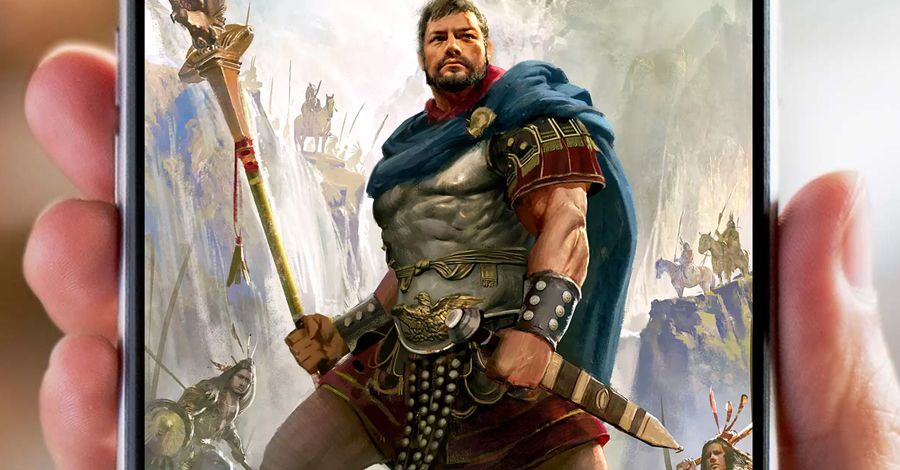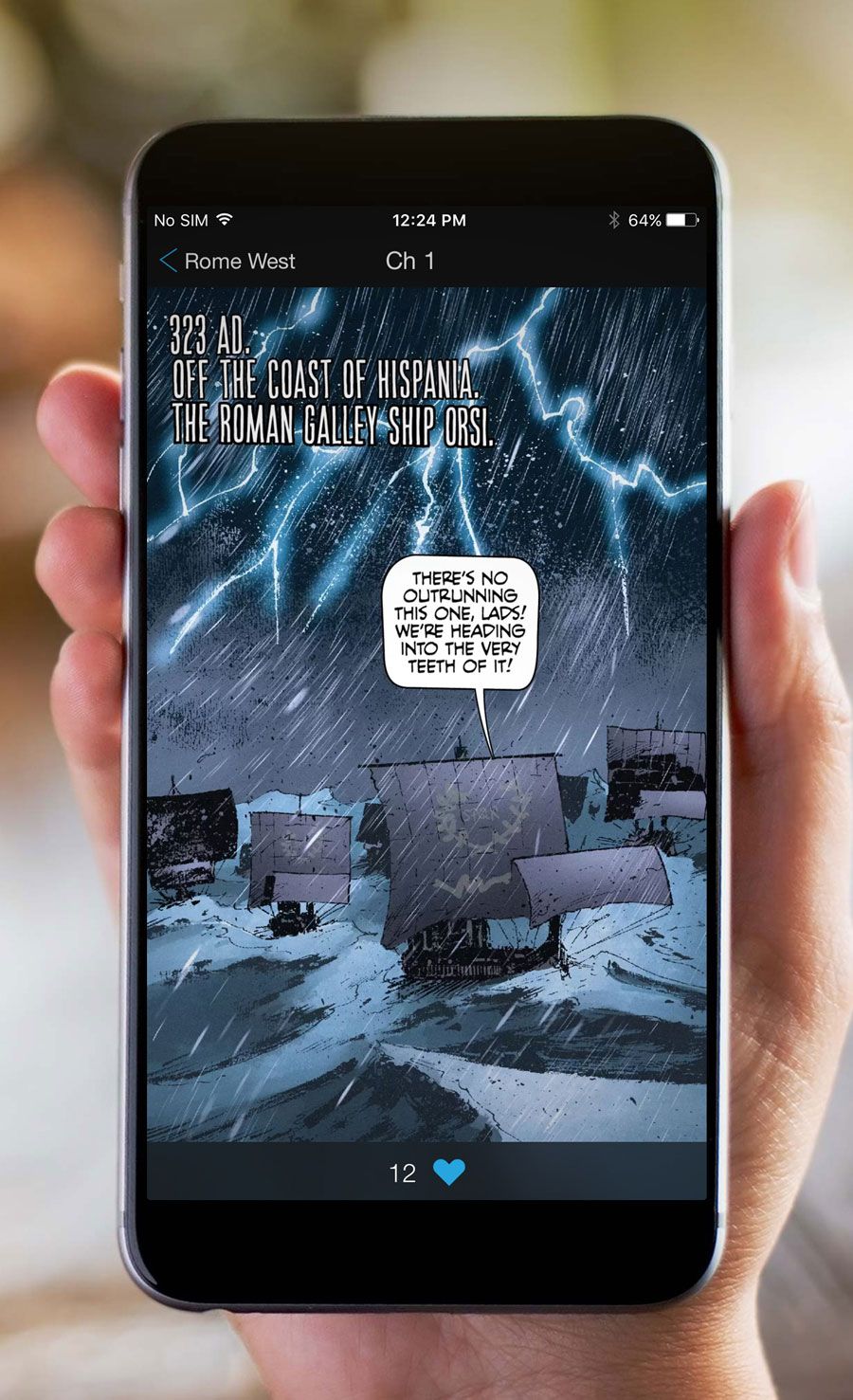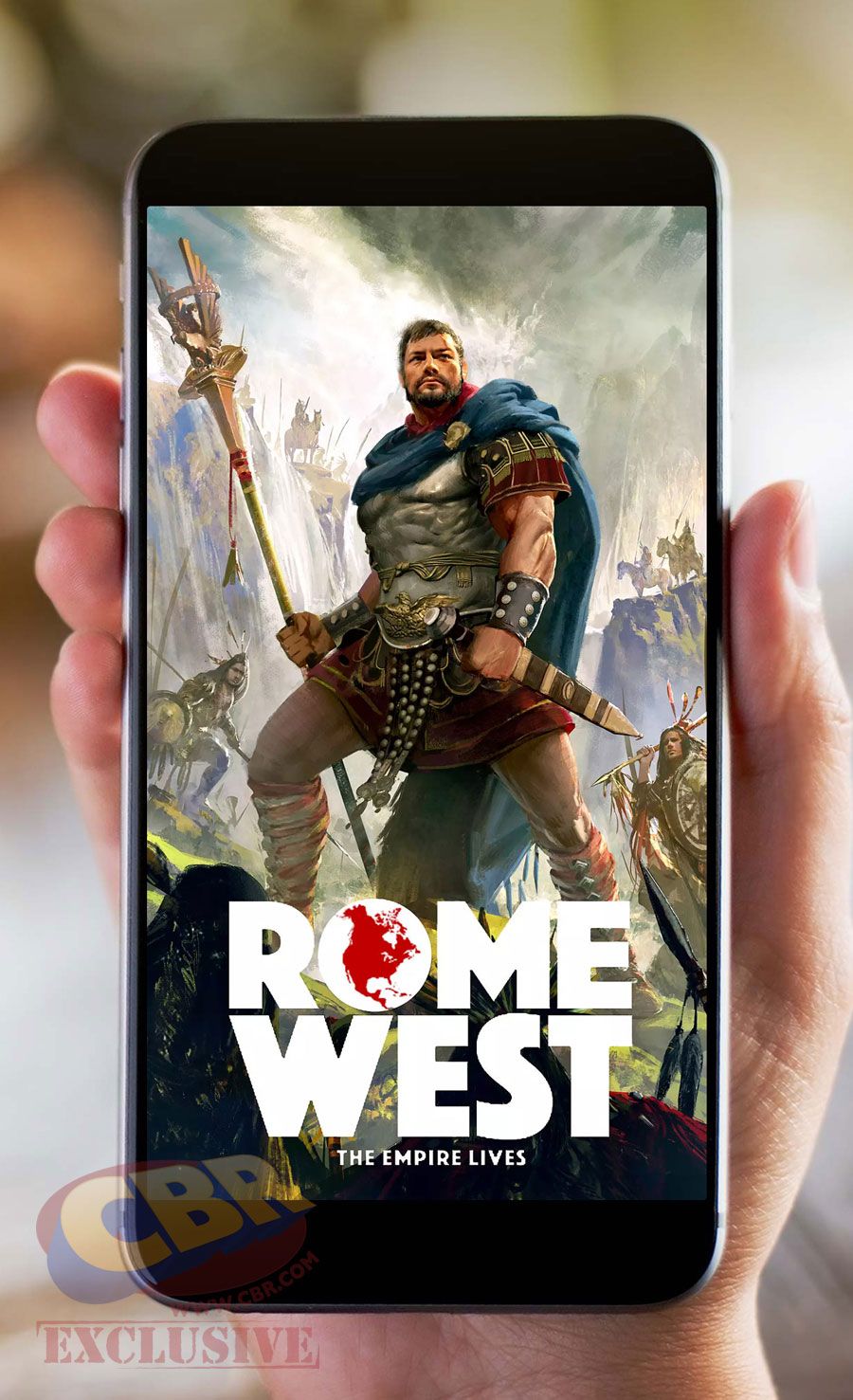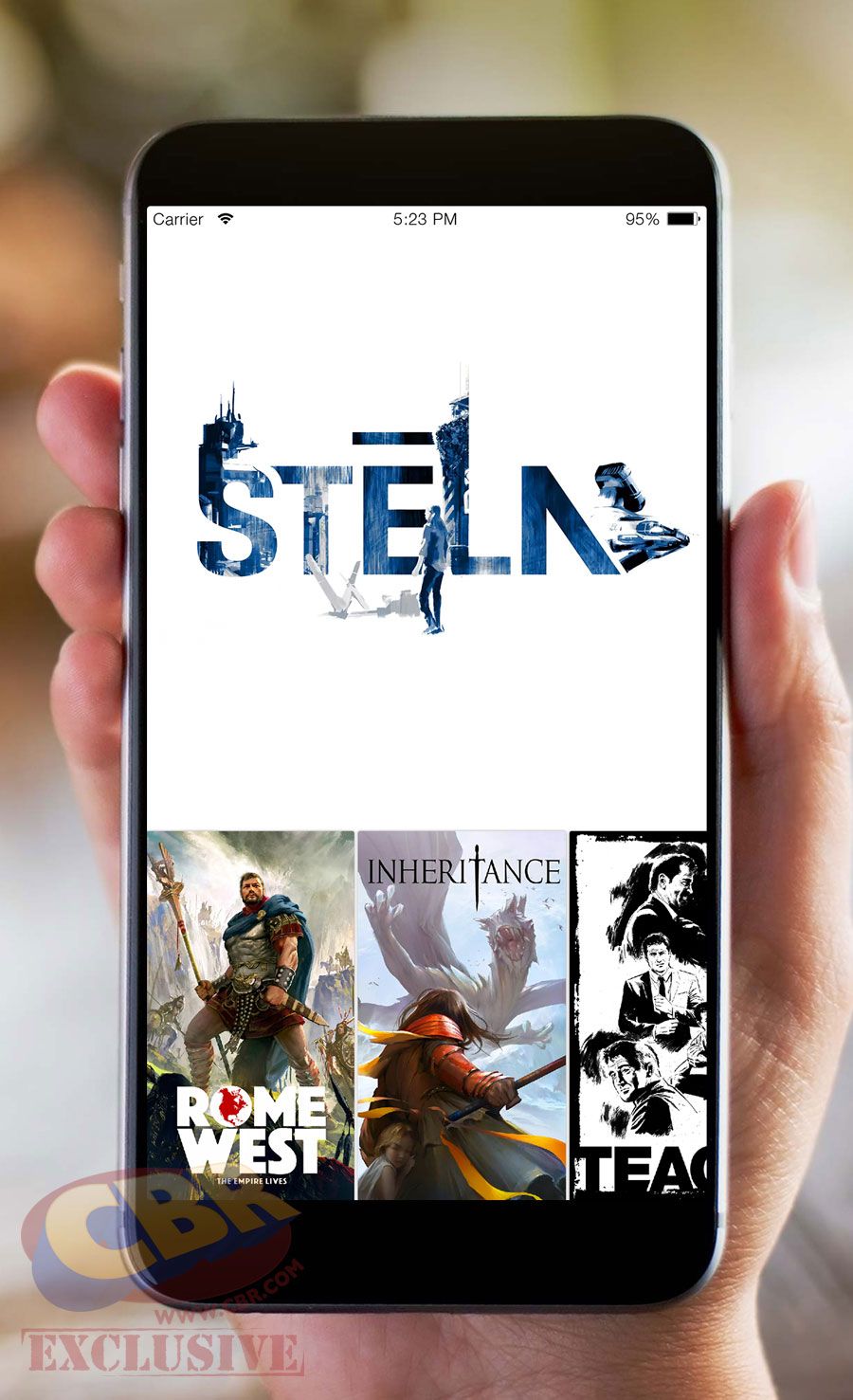You don't swipe to the side when you're going through Tumblr or Twitter on your phone, so why should you do it to read your comics?
That's the thinking behind Stēla (pronounced "Steela"), a new digital comics platform designed for easy reading on mobile devices: The comics are configured for a smartphone screen -- no need to tap or zoom -- and they scroll down, just like most mobile apps. Stēla will launch in early 2016 as an iPhone app, and an Android version is in development as well. (While it's optimized for the iPhone, the service will also work on the iPad.)
The other unusual thing about Stēla is that it's an "all you can eat" subscription service, along the lines of Netflix or Marvel Unlimited, but featuring original, creator-owned comics made specifically for reading on a small screen. The initial lineup consists of five series: "Rome West," written by Brian Wood and Justin Giampaoli, illustrated by Andrea Mutti, and colored by Vladimir Popov; "Teach, " by Stuart Moore and Greg Scott; "Inheritance," by Ryan Yount, Kidman Chan and Yumiki Hong; "Out with a Bang," by Stuart Moore, Tony Talbert, John Heebink, Chris Marrinan and Marissa Louise; and "Afrina and the Glass Coffin," by Irene Koh.
And there's more to come. Since the beginning of this year, editor in chief Ryan Yount and senior editor Jim Gibbons have been quietly commissioning new comics for the service. Gibbons tells CBR there are 25-30 series already in progress, and another 10 that have been contracted. While the monthly subscription fee hasn't been finalized, the first chapter of each comic will be free to everyone, and there will be special promotions and discounts when the app launches. In terms of quantity, one chapter is the equivalent of about eight pages of traditional comics.
Stēla is not a reprint service -- all the comics are being specially created for the app and won't be found anywhere else. "Everything is exclusive, and it's all digital native and iPhone native. That's the key part," Yount told CBR News. "We have talked about just trying to rearrange books that have already been put out into our format, but it's pretty unwieldy."
That the comics are designed with the digital reader in mind will make them more accessible and easier to read. "People know how to use that vertical feed -- it's very simple, using your thumb, scrolling up and down," Yount said. And that ties in with the intent of Stēla, which is to expand the overall comics audience. "It's about reaching a lot of people that are not currently reading comics, but do currently have an iPhone or Android," he elaborated. "In that case, really, what we are trying to do is make it simple for people."
The vertical feed is already familiar territory for younger creators who post their work on Tumblr. "One of the things that is nice about our format is that it's sequential storytelling in a very pure form, where you are seeing one panel after another as you scroll through," explained Gibbons, who was formerly an editor at Dark Horse. "We are working with creators such as Jen Bartel, Coleman Engle, Caleb Goellner and Wook Jin Clark, who already are on Tumblr. Tumblr on your phone works with vertical scrolling, so you have people who are used to formatting for this. It kind of takes it to the next evolution -- it's the pure essence of sequential storytelling, one panel after another, but we bring in the way people use digital interfaces, which is scrolling through social media."
The veteran creators are taking a variety of approaches to the app's format. "Ron Wimberly came up with a good way to imagine the page," Yount said. "He took four screens' worth of height and stacked it to make himself a vertical template. He uses that as a loose page, and it's just stacking sequences of those, on one another.
"We had a good analogy from Joe Casey, thinking about the [Jack] Kirby four-panel grid," Yount continued. "Each of those quarter-panels is about the same aspect ratio as a mobile phone screen, so if you think of a page being four of those, you can think about four screens being one page of traditional comics."
Gibbons says the creators involved in the launch appreciated the logic of Stēla right away. "Because we were still unannounced, we've had to go to everyone and explain what we are and get them up to speed on format and what we are trying to do," he said. "Almost everyone we talked to has immediately said, 'This is something I've been wondering about for a long time! I'm interested in being involved.' It's one of those things where, more and more people we talk to, the more [we hear] people have been waiting for this next evolution of comics to come along, and it's exciting for them."
While most of the comics on Stēla are creator-owned, some are internal projects that are video game concepts being developed as comics. The core team of Stēla came from a mobile game background, an industry that may be a future path for expansion. "While there are no immediate plans to develop games from our comics, Stēla's connections to the mobile gaming industry put us in a uniquely advantageous position to pursue game development as projects well suited to that medium arise -- an opportunity we're looking forward to exploring," Gibbons said.
But for now, it's all about the comics. "We think of ourselves, in many ways, as a creator-fueled publisher. We are partnering with creators and funding passion projects for them [in order] to fund this new publishing and delivery system that's a passion project for all of us," Gibbons said. "We are paying page rates and advances so people will be amply compensated, and so they will have a good experience at the end of the day." Being freed from the constraints of the direct market allows the team to focus on comics they believe are good, he elaborated, without concern for the traditional categories and popular wisdom about what sells and what doesn't.
"One of the things we really want to do is be as inclusive and diverse a publisher as possible, from who we are working with, to what types of stories we are telling," Gibbons said. "We are putting out comics in a whole new format that is going to be incredibly accessible to current comics readers, as well as people who never got into comics before. Because of the types of storytelling we are doing, and the types of people we are working with, we are hoping to have a very broad audience. We are trying to put out many genres and types of stories, to reach out to as many people as possible."




